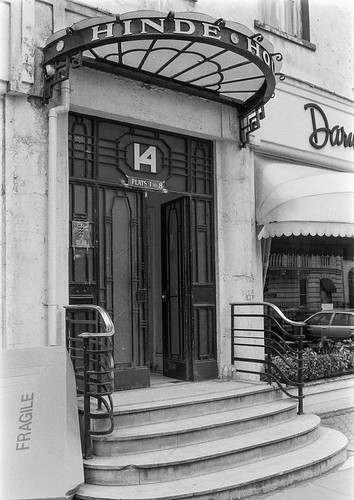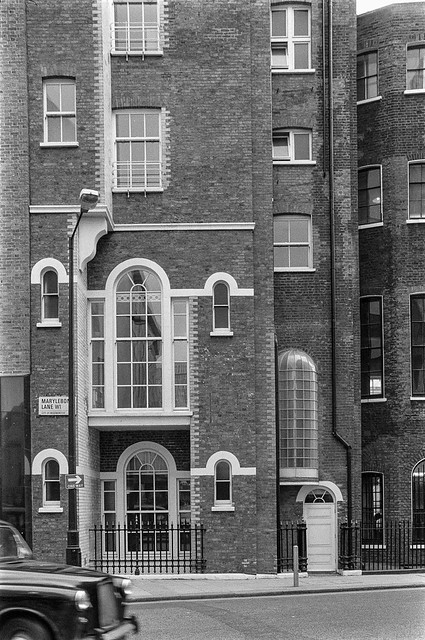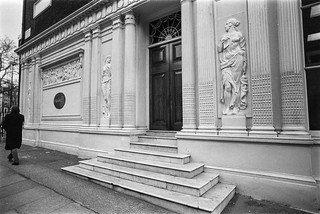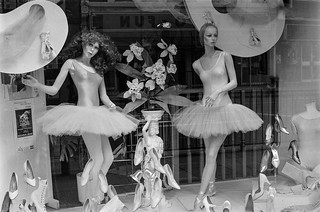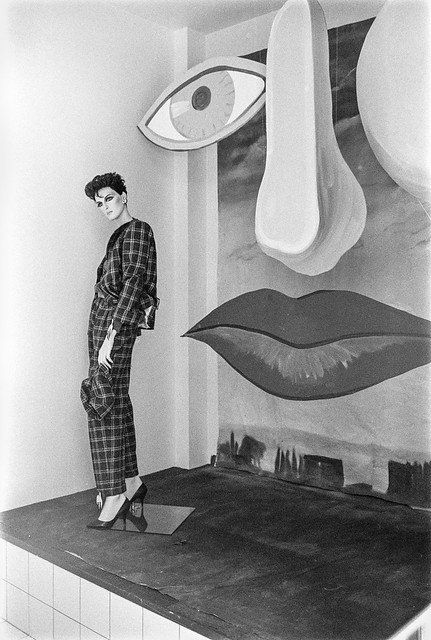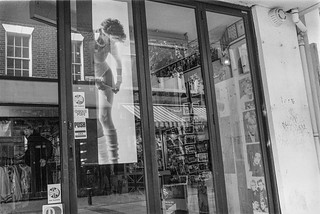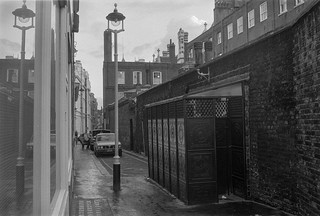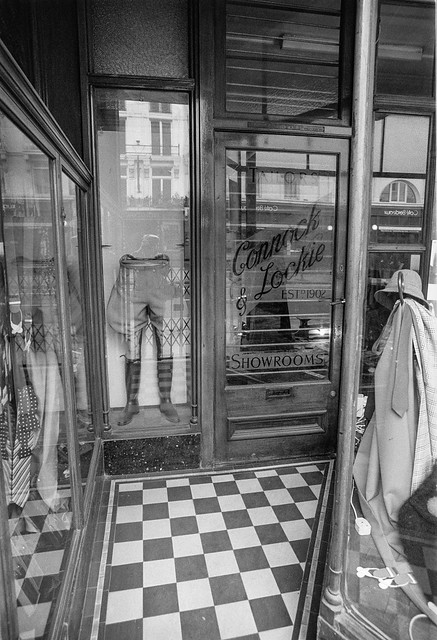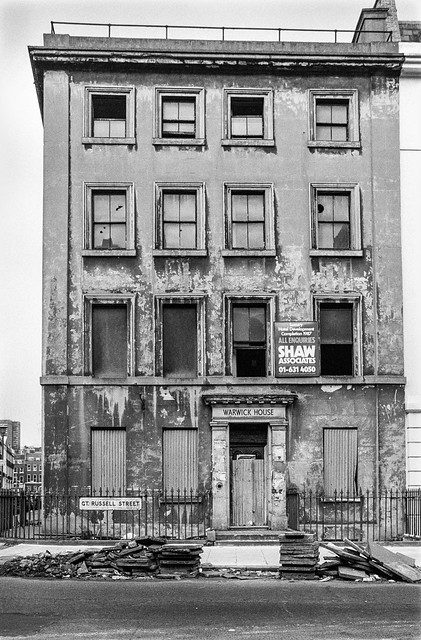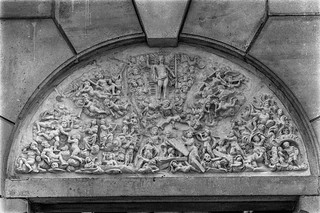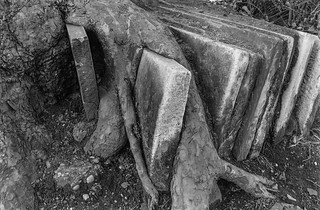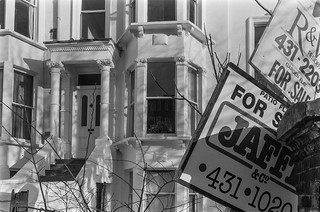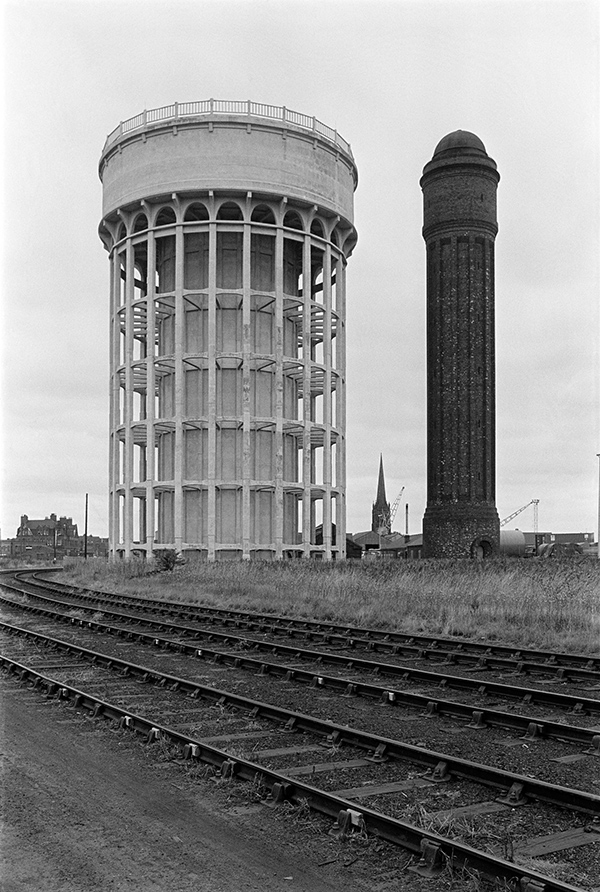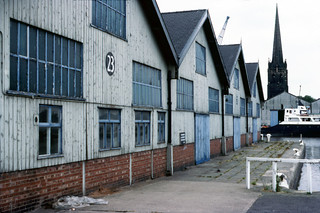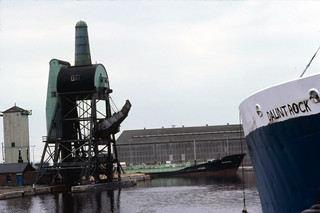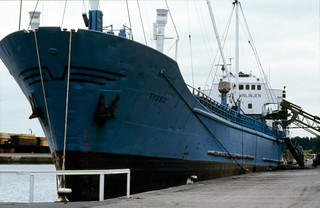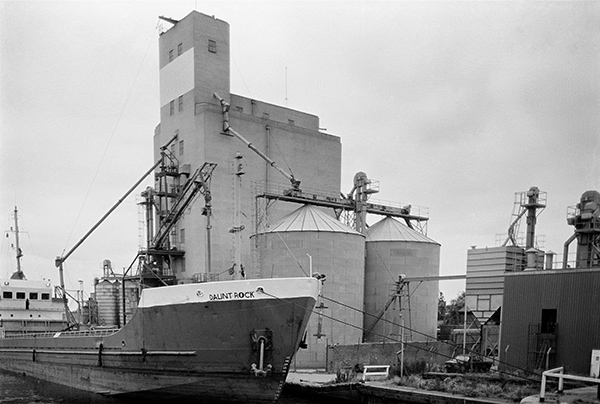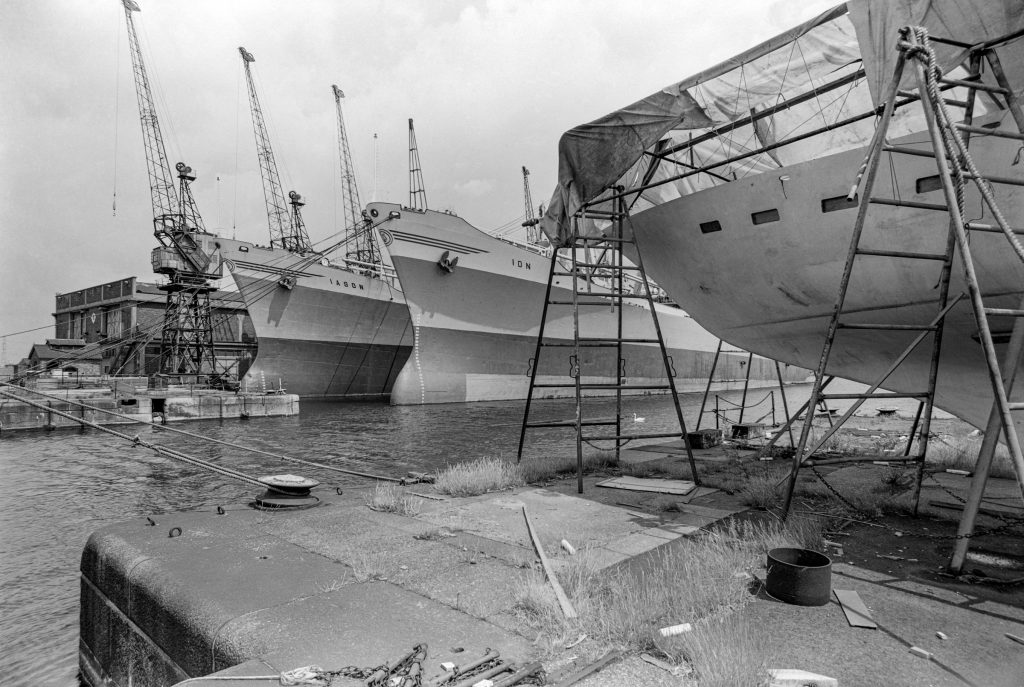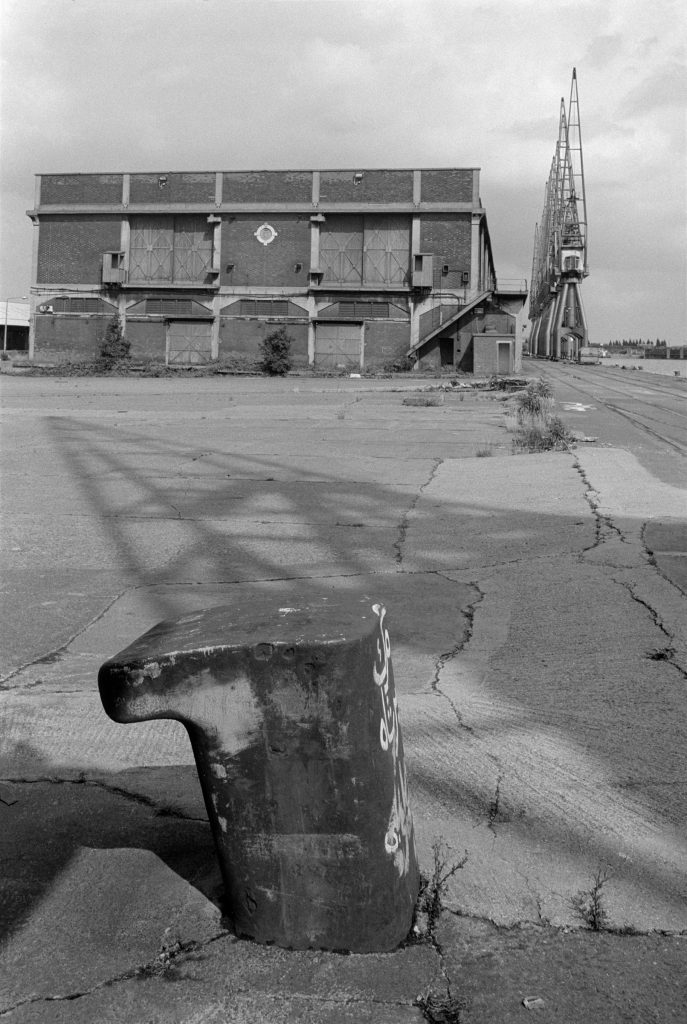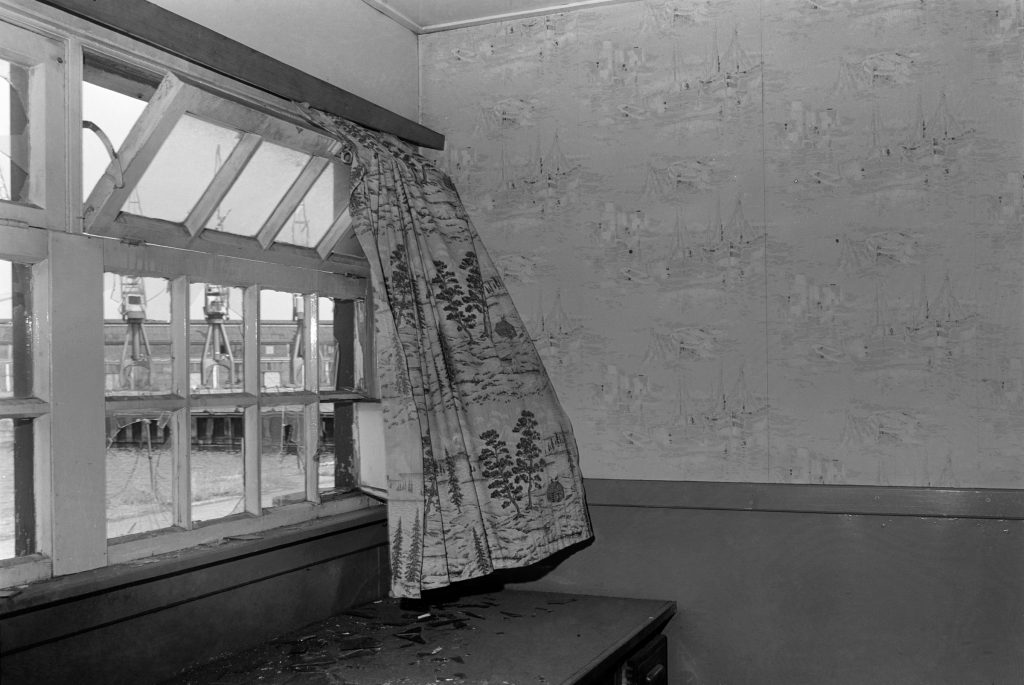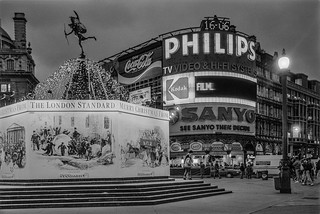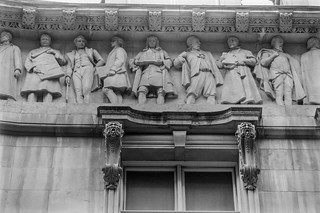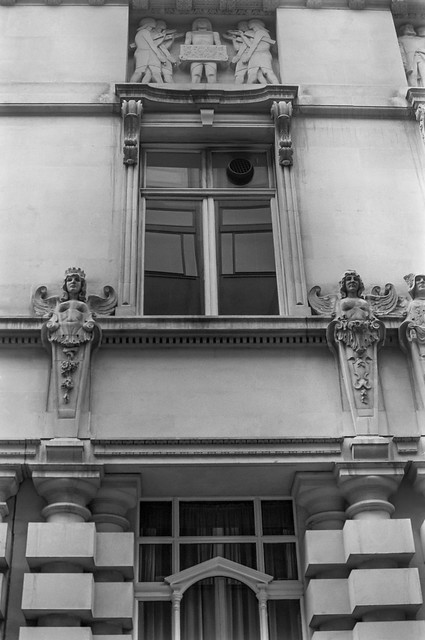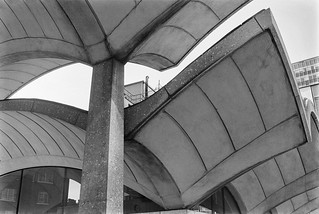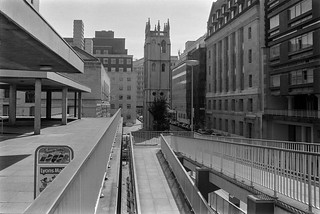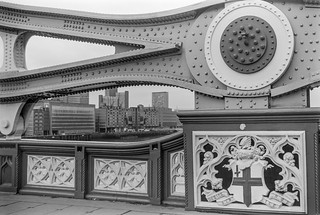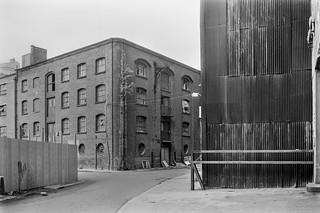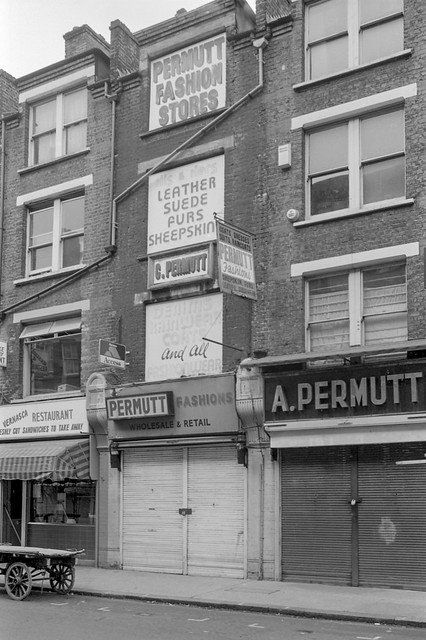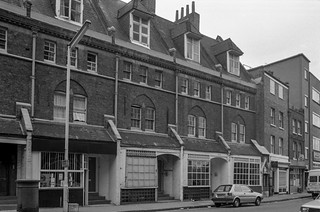This gem of a building is just around a corner from the BBC on a few yards down Duchess St, on the opposite side of Portland Place was built to the plans of Robert Adam in 1769-71 as the stable-coach house to Chandos House, Queen Anne Street, and was altered – according to its Grade II listing text “quite sympathetically” around 1924 by Arthur Bolton. The text states it is now part of the British Medical Association.
The lean of the lamp post emphasises the rectangular formality and symmetry of the building as does the man walking past. I’m not sure if I would have preferred not to have a taxi speeding into the picture. The 35mm shift lens enabled me to keep the verticals upright and get the whole building in frame from the opposite side of a fairly narrow street.
Just around the corner from the previous picture is this magnificent fence with its baskets of flowers. I felt the out of focus bush made a suitable contrast between natural vegetation and its representation.
I think this is the garden screen mentioned in the listing text and probably like the house behind dates from 1914.
Doorways are one of the most important architectural features of buildings, and this one very clearly gives an impression of the luxury of the flats inside Hinde House.
A similar doorway next door (London streets sometime number in odd ways) is a little plainer, perhaps suggesting that inside are flats for less important people. Though it is certainly not a ‘poor door’ leading to any social housing in the block.
My theme of doors continues with the grand entrance for The Royal Society of Medicine in Henrietta Place.
And another door is a prominent feature in this building with its series of semi-circles on Marylebone Lane. It’s a building with the window at the centre of the picture set a little lower, so it seems to be winking at us.
Again a taxi has crept in. There are far too many of them, often simply cruising around empty in the centre of London, a significant cause of both pollution and congestion. They are slowly changing from diesel to electric which will help with the pollution, but wont ease the congestion. Ridiculously they are exempted from the congestion charge while minicabs have to pay it. We don’t need ‘ply for hire’ when cabs can be summoned by smartphone and its time for change.
There are a few more pictures of doors in the area in this section of my 1987 London Photos, but this at Bessborough House on the corner of Cavendish Square is perhaps the most impressive. According to the Grade II listing the house dates from 1770s with c.1800 and early C20 alterations. About this entrance it states “Blind return to Wigmore Street has neo-Adam style pilaster treatment to ground floor with shallow relief modelled “graces” between pairs of pilasters under entablature – all in stucco.”
When I took this picture it had the circular message at left that it was the premises of Rimmel, the cosmetics house founded in 1834 by French-born perfume chemist Eugène Rimmel and often known as Rimmel London. He put on sale a product for darkening eyelashes using the newly invented petroleum jelly and black pigment, marketed under the name mascara which was hugely successful both in the UK and internationally – and mascara is still called ‘Rimmel’ in a number of languages.
More pictures on page 3 of 1987 London Photos.
All photographs on this and my other sites, unless otherwise stated, are taken by and copyright of Peter Marshall, and are available for reproduction or can be bought as prints.


